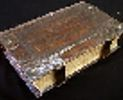
Jesus last words to his disciples at the ascension and to us was the great commission, (see our Gospel Reading today). We are all to be His witnesses to the world. But there are other commands that go along with the Great Commission that are just as valid. There are 6 things that as Christians we should all be doing:
- Waiting
- Watching
- Awake
- Working
In the natural, physical world, carry on with the daily necessities of life, but while you do, also give your attention to the spiritual. The apostle Paul was pleased to say that he worked, earned his living, and took no money from the Church. While also daily adding to it’s number.
- Worthy
Have you ever noticed in the benediction that the Grace of our Lord Jesus Christ comes before the love of the Father and the blessings of the Holy Spirit. That’s because that’s the order in which things need to be done. None of us is worthy of communion with God, yet daily communion with God is what we all need and was the first thing lost when Adam and Eve sinned. That relationship is what God seeks from us. We can only have it through acceptance of Jesus Christ sacrifice on the cross for our sins. Then we are covered by his Grace and can walk in His light and enjoy the benefits of a relationship with our Father and Creator.
- Witnessing
That brings us back to where we started...The great Commission.
Today we pray for those who have gone as missionaries overseas to share the gospel, it is often now a very dangerous calling. But we also need to remember that we are all Jesus ambassador’s to the world. Mostly today the world doesn’t want to know about religious ritual, many of them don’t want anything to do with a Church, but talk about Jesus and good or bad, you have their attention. So go open your mouth and share your faith....He commanded it, they need it, so no matter what it may cost you....that should settle it!
 Welcome
Welcome Calendar
Calendar Today's Word
Today's Word Lauds
Lauds Terce
Terce Sext
Sext None
None Vespers
Vespers Compline
Compline Matins
Matins